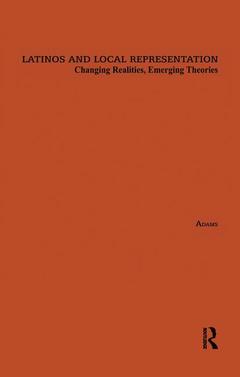L’édition demandée n’est plus disponible, nous vous proposons la dernière édition.
Latinos and Local Representation Changing Realities, Emerging Theories Latino Communities: Emerging Voices - Political, Social, Cultural and Legal Issues Series
Auteur : Adams Florence

Date de parution : 08-2016
13.8x21.6 cm
Date de parution : 03-2000
Ouvrage de 288 p.
13.8x21.6 cm
Thème de Latinos and Local Representation :
Mots-clés :
Single Member District; electoral structures; Majority Minority District; Voting Rights Act; Multimember Districts; political behavior; Latino Majority Districts; ethnic minorities; Justice Department; Single Member District System; Dilute Minority Votes; Minority District; Minority Voting Strength; Multi-member Districts; Latino Candidates; Latino Population Percentage; Total Minority Population; Hispanic Population Percentages; Latino Population; Redistricting Process; Hispanic Candidate; Latino Percentage; Percent Hispanic; Hispanic Districts; Influence District; Latino Voting; Vote Dilution; City's Demographer; Single Member Electoral System
